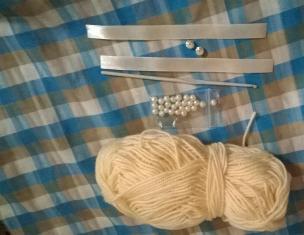” №12/2017 22.02.18
Oddly enough, after giving birth, young mothers quickly forget the pain of contractions, a possible episiotomy, and unpleasant procedures for removing sutures, but the emergency department, where they had to endure shaving the perineum and an enema, remain in their memory and are passed on from mouth to mouth by the “terrible” ones. stories. Let's find out whether it's so scary and why it's necessary.
Shaving and enema before childbirth: ice and fire
How much pathos and passion is put into the story of how a nurse tried to scrape hair from a woman’s secret tender places with a dull razor, about the pain of contractions against the background of an enema before childbirth. And with every woman who gives birth, the myths and legends surrounding these simple actions continue to spread, frightening the uninitiated - those who have yet to come into contact - literally, not figuratively - with the razor blade cooling the skin of the perineum and the mug of the legendary Esmarch filling the intestines with warm water . We will not say that nothing is more pleasant than these procedures, but still there are enough exaggerations here - these procedures are neither painful nor humiliating, except that - let's be honest - a little unpleasant, but nothing more.
Putting aside most of the emotions, let's try to take a sensible look at what is happening in the emergency department of the maternity hospital. Typically, expectant mothers are interested in several questions:
- Why is this necessary?
- Can this be avoided?
- If possible, how?
Why and who needs procedures before childbirth?
The emergence of this legitimate question indicates that a woman ceases to feel like a subordinate figure in a medical institution and wants to consciously relate to what happens to her at the exciting moment of the birth of a child. In addition, it is quite possible that the enlightened part of young mothers have heard that in foreign clinics specializing in obstetric care, they abandoned these hygienic procedures and this did not affect the course of childbirth. How to reconcile domestic medicine with foreign medicine in solving this pressing issue?

Currently, both of these points of view on the functionality and necessity of these hygienic procedures before childbirth have a right to exist.
Procedures before childbirth in Russian maternity hospitals
Let's start with substantiating the position of domestic medicine. An enema before childbirth is necessary, as it promotes the development of normal labor activity. The fact is that the same nerve plexus simultaneously controls the activity of the rectum, bladder and uterus. It follows that the nerve impulses that determine the contraction of the uterus simultaneously stimulate the contraction and emptying of neighboring organs - the bladder and rectum. Therefore, such emptying can occur directly at one of the moments of labor.
If the intestines are previously emptied, the contraction and relaxation of the uterus during childbirth can be maximum and the baby’s head will be given greater freedom when moving along the birth canal. Thus, the course of labor with a pre-administered enema will be more harmonious.
What happens before childbirth in foreign maternity hospitals?
Foreign medicine, which puts the wishes of patients at the forefront, has found a compromise solution when the mother in labor does not want to do an enema before childbirth. The motivation is this: yes, during childbirth there will be an emptying of the intestines, but since this moment occurs only at the moment of eruption of the baby’s head, and not during its birth, contact of the child with the contents of the intestines is excluded - of course, subject to hygiene measures. All discharge during childbirth - and this amniotic fluid, and blood, and urine, and feces - fall into a tray placed under the gynecological chair, which is emptied by the medical staff, so there is no contamination of the maternity unit. True, they also admit that if a woman giving birth suffered from constipation, then if feces are densely packed in the rectum, an enema is necessary for the normal course of labor.
Why do we need a razor?
Shaving the perineum is an attempt to anticipate a possible episiotomy: growing hair can be a source of infection for the child and interfere with high-quality suturing of tears and cuts in the perineum. Although the flip side of this issue is this: even after the most delicate shaving, microscopic wounds and irritations appear on the skin, into which pathogenic bacteria can enter, so shaving abroad is replaced by treating the perineum with a special antiseptic solution. So, when answering the question of why and who needs this, you should keep both positions in mind, taking into account the fact where you are ultimately going to give birth and how important it is for you to avoid the notorious hygiene procedures.
Are compromises possible?
Let's start with the most wrong option, which is to create a scandal directly in the emergency department, explaining to the medical staff that he is wrong, and start telling doctors about world achievements in this area. Then there is a chance to listen to the desire to go to the West to give birth. Such consequences are most likely not included in your plans, as is moving to a neighboring maternity hospital.
Compromise option: agree in advance with the medical staff on the option that suits you best. This can be carried out independently at home in the initial stage of labor, when the amniotic fluid has not yet receded and the amniotic sac is intact, and the intervals between contractions are 20-25 minutes. It's worth pointing this out special attention, because the time point here is very important, because If the cervix is significantly dilated and during the period of pushing, an enema is not given even in those maternity hospitals where it is a mandatory procedure.
If possible, how?
So, we shave the perineum and do an enema at home. If you are ready to give up the initiative of the nurse in the emergency department, then at home you will still need an assistant, since you will be in the way all the time big belly. This could be your mother or husband (if you trust him so much that you allow him to contemplate yourself in such an interesting state and form).

Shaving before childbirth. There are no special secrets here, except for extreme accuracy: apply copious amounts of foam to the pubis and perineum and, using smooth movements of the machine, remove hair along with the foam. A special women's razor with a floating head, which bends according to the contour of the body, will do a good job. If there is no assistant, use a hand mirror to see from behind your stomach what and how you are doing. Rinse off the foam, dry the skin and apply moisturizer to eliminate the feeling of discomfort after shaving such delicate areas. The whole procedure will take about 15 minutes.
Enema before childbirth. To do this, you will need an Esmarch mug - a rubber reservoir that resembles a heating pad with a hose inserted into it. You need to fill it with 1.5-2 liters of water at room temperature, hang the tank at a height of 1.5 m from the plane where you will lie, lubricate the tip with cream or Vaseline, drain the air from the tube - for this you need to drain a little water from the tip , then insert it into the anus. For good filling of the intestines with water, the position during the procedure is important: you need to lie on your left side or stand on all fours, leaning not on your hands, but on your elbows. So you have to admit that without an assistant, this intimate procedure will be difficult to carry out. After this, you need to wait until the water fills the intestines: deep, calm breathing and stroking the abdomen will help relieve spasms and restrain the urge to go to the toilet. After all the water has poured in, wait 3-5 minutes - and you can go to the toilet, keeping in mind that the water will come out in portions and not all at once... In general, expect that this procedure will take you half an hour.
Now on the road!
Now, lightly, with an empty intestine and a smooth perineum, with a sense of accomplishment, you can go to the emergency department of the maternity hospital, reaching the finish line, which begins in the delivery room.
"Pregnancy is a time of pleasant expectations and troubles. Almost every woman looks forward to meeting her baby with joy. In 9 months, a woman needs to do a lot of things, and the last month is especially busy. You need to prepare yourself for the birth process and create all the conditions for the baby. Preparing a woman for childbirth includes both a psychological attitude and preparing the body for a complex process.
What should you do before giving birth?
Preparing the body
This can include a prenatal diet, preparing the perineum, shaving, cleansing the body before childbirth, and more. All these procedures help to protect and facilitate the birth process. Even though they wear advisory nature, every woman should understand that this is very important:
Diet before childbirth
Doctors recommend sticking to a certain diet. A month before the onset of labor, you need to reduce your consumption of animal proteins (fish, meat, eggs, milk); you can consume fermented milk products, cereals, and plant foods. After two weeks, it is advisable to remove cereals and bread, leave fermented milk products and plant foods. This will allow the intestines to empty a little. Moreover, women usually experience a decrease in appetite before childbirth, the growing child puts pressure on the stomach and gastrointestinal tract It’s hard to cope with heavy food. On the day of birth, when the woman feels contractions and her water has already broken, it is better not to eat. Firstly, the stomach must be empty during childbirth, and secondly, contractions sometimes provoke nausea.
Cleansing the body before childbirth with an enema
It is better to carry out this procedure at home at the very beginning of contractions. It will be less painful. An enema is done to minimize bowel discharge during childbirth.
Shaving before childbirth
Previously, in Russia, shaving was a mandatory procedure before childbirth. But now our obstetricians and gynecologists have begun to focus on the West and do not require women in labor to come to the maternity hospital shaved. So whether you need to shave before giving birth is up to you to decide. If you are not sure whether you can shave neatly without cutting, then it is better not to shave at all, as infection can get through the cuts. You can also ask the maternity hospital administration how they feel about shaving pubic hair.
Sanitation before childbirth
From the 36th week it is necessary to begin cleansing the birth canal. Sanitation is carried out so that a possible infection of the mother is not transmitted to the child during birth. In addition, if there is inflammation in the vagina of a woman in labor, this can cause cracks in the vaginal mucosa. Sanitation of the birth canal before childbirth is carried out with antiseptic solutions, suppositories, and medicinal tampons. There are many methods; your doctor can advise you on the appropriate method.
Perineal massage before childbirth
To prevent ruptures, it is necessary to prepare the perineum for the birth of a child. The massage is performed using oil and is aimed at increasing skin elasticity. Intimate gymnastics will also be very helpful.
Preparing to meet your baby
In addition to the above procedures before giving birth, a woman must prepare to welcome her baby. It is necessary to prepare the room, clothes and everything necessary for care. It is advisable that there is always someone next to the woman at the expected time of birth. If there are children in the house, it is necessary to decide who they will stay with while the woman is in the hospital.
Preparing things needed for the maternity hospital
In the last days before giving birth, it is necessary to pack a bag with necessary things. Here's what you might find useful:

This list may vary depending on the rules of the maternity hospital. It is necessary to discuss with the hospital administration everything that needs to be done before giving birth and what to take with you. For example, some hospitals do not accept home clothes, they give out their own robes and slippers. Do not hesitate to ask even about the most insignificant things, perhaps your curiosity will help you ease the birth process and make this day the most joyful and memorable.
The expectant mother enters the maternity hospital with the onset of labor, whether contractions or effusion amniotic fluid. However, this is only the very beginning of the process. Before a woman ends up in the delivery room, some more time will pass, which in the maternity hospital is devoted to various necessary procedures. Some of them can be done at home, on your own, while others are carried out only under medical supervision.
What you can do yourself
So, when you feel the most important moment approaching, you need to not just put on the first clothes you come across and urgently run somewhere. First, you should call an ambulance or call the doctor with whom you have a contract for childbirth. Next, after checking that all things and documents have been taken with you, you should, if possible, remove nail polish from your nails, wash off your makeup from your face, take a shower, put on clean underwear and put a new pad in your panties. For those who do not want to begin their acquaintance with the maternity hospital with a procedure that is not the most pleasant, you can do an enema yourself. Only in this case we must not forget that uterine spasms may intensify, and the birth process will accordingly accelerate. In addition, before leaving, you should leave all your usual decorations at home. Now, however, doctors allow you not to remove the chain with a cross, but it is better to just take it with you and put it on when the birth is over.
Even the most avid motorists should still take into account that in moments of contractions it is very, very difficult, almost impossible, to control themselves, and therefore, while driving, there is a risk of creating an emergency situation on the road. Therefore, if you are going to the maternity hospital on your own, you need to agree in advance about who will drive the car, and also plan the route taking into account traffic jams. In the car, it is better to take a reclining position, placing a diaper on the seat in case the amniotic fluid breaks. For convenience, you can take with you a couple of small pillows that will help you endure the journey with greater comfort. And, of course, don’t forget a pre-prepared bag at home.
Yes, and you also need to remember that the first birth, as a rule, lasts longer than subsequent ones, so this feature should also be taken into account when planning your departure to the maternity hospital.
In the waiting room of the maternity hospital
The first thing you have to do in the reception department is to change into a robe and slippers. It would be good to find out in advance whether the conditions of stay in a particular institution allow your own clothes and shoes or whether you need to wear official clothes. All things issued at the maternity hospital (robe, nightgown, slippers) are perfectly clean and changed regularly.
While the expectant mother is changing her clothes, the nurse is recording all her data. To do this, she needs to provide documents: a passport and exchange card, an insurance and pension policy, a birth certificate (these documents are required if the birth is planned in a government institution). After this, the woman in labor should be weighed, her height and the volume of the external dimensions of the pelvis measured, the skin examined for the presence of fungal and infectious diseases, temperature and blood pressure measured, and checked for signs of a cold. Those who are fine can give birth in the physiological department. If any problems are discovered or the documents are not in order, the woman will be sent to the observation department. This is required for preventive purposes, so that if she has an infectious disease, she does not expose healthy patients to the risk of infection.
Not the most pleasant procedures
We have already said that the first thing a woman in labor is given is an enema. Previously, this procedure was mandatory. The question of why to do such an unpleasant procedure as an enema before childbirth worries many pregnant women no less than the birth itself. Firstly, a cleansed intestine ensures normal labor, from contractions to direct pushing and the birth of the baby. The body, as a rule, cleanses the intestines on its own before childbirth, but it doesn’t hurt to help. Secondly, the feeling of pushing is similar to the feeling during the act of defecation, which is associated with irritation of the receptors of the rectum during the birth of the baby and leads to a corresponding reaction of the body. Therefore, an enema will help you focus all your energy on the birth of a child and make childbirth a more comfortable and aesthetic process.
Another controversial procedure is shaving pubic and perineal hair. On the one hand, to disinfect this area, it is treated with a special bacteriological liquid. On the other hand, after childbirth it is necessary to examine the perineum to ensure there are no tears, and it is more hygienic to do this in the absence of hair. In addition, sometimes during childbirth there is a need for an episiotomy, and golden rule Medicine says that stitching any tears and cuts, even the smallest ones, should only be done on a clean surface of the skin, so that healing is as fast as possible.
Examination by the doctor on duty
An expectant mother admitted to maternity hospital, a conversation with the doctor on duty awaits. After studying the exchange card, he will ask several questions about how the pregnancy proceeded, whether there were any diseases or complications during this period, he will ask when the contractions began and how often they are repeated, whether the waters broke, when and what was the last dose food.
After this, the specialist will conduct a vaginal examination. This is necessary to determine the degree of dilatation and the condition of the cervix, which makes it possible to understand whether labor has actually begun. The doctor will assess the height of the baby's head and its position, listen to the fetal heartbeat, and assess the strength of contractions. All these studies are necessary for a preliminary prognosis of childbirth.
The doctor will also talk about exactly how childbirth occurs. He will calm the woman down and tell her how to behave during childbirth. There is no need to be afraid of appearing ignorant: if you have any questions, you should definitely ask them either to your doctor or midwife. This will help you feel more confident and correctly follow the recommendations of specialists at the most crucial moment.
The outcome of the conversation will be a labor management plan. The woman in labor has the right to get to know him in detail, find out for herself the meaning of procedures that she does not understand, and express her wishes, which, if possible, will be taken into account. In a good maternity hospital, no one will put pressure on the expectant mother, and even in an emergency situation (which is not uncommon in obstetric practice) they will inform you about what is being done at the moment and for what purpose.
Other manipulations
In addition, during the entire time from admission to the maternity hospital until the baby is born, other manipulations may be required. For example, during the entire period of labor, cardiotocography is performed, which allows you to monitor the entire process and evaluate the fetal heart rate against the background of contractions and pushing. The woman in labor is attached to two sensors on her stomach, one of which registers the fetal heartbeat, the other measures the intensity and duration of contractions. All data is displayed on the monitor. According to the chart, the intrauterine state of the fetus is assessed, which allows timely diagnosis of incipient hypoxia in the child and avoid serious complications during childbirth.
In exceptional cases - for example, if there is a danger of deviation from the normal course of labor - to the expectant mother a catheter is placed for intravenous administration of drugs, if necessary. For example, in case of fetal hypoxia or weakness of labor, it is necessary to correct the complications that have arisen in a timely manner, which allows in many situations to avoid an emergency cesarean section.
All these procedures are done some time before the baby is born, that is, in the first stage of labor. And then the actual attempts begin, the result of which is the birth of a new person.
The last weeks of pregnancy, starting from 36-37 weeks, are already considered the prenatal period. Now the baby can be born at any time. Therefore, pregnant women have various experiences and fears.
Some are afraid of pain, others - that they have not completed the necessary preparations, and still others - of a sudden birth. Therefore, you should know all the actions of a woman in the prenatal period.
At this time The pregnant woman's body prepares for childbirth, the fetus is formed and ready to be born.
From the thirty-sixth week of pregnancy, doctors advise undergoing sanitation of the birth canal. This is done to cleanse pathogenic microflora and ensure cleanliness during childbirth.
Herpes, STDs or thrush increases the risk of infection of babies during childbirth.
If there is even the slightest inflammation, the woman in labor risks getting a crack in the mucous membrane. With pathogenic microflora, there is always inflammation.
During sanitation, pathogenic microflora is removed and normal microflora is introduced. Therefore, this procedure lasts three weeks.
There are many methods of sanitation. It is selected individually for each woman. During the prenatal period, visits to the doctor should be as often as possible, at least once a week.
Each time, the doctor listens to the baby’s heartbeat, measures the size of the uterus and determines the position of the fetus.
Regular weigh-ins also take place. Weight gain should be 9-13 kg.
But in the last days before pregnancy there is a slight weight loss. The body loses a lot of fluid and weight loss reaches up to two kilograms.
Before each visit to the doctor, a woman does a urine test to check the amount of protein and sugar. Protein is a symptom of gestosis (late toxicosis) or toxicosis of the second half of pregnancy, while sugar signals diabetes.
The doctor also measures blood pressure, an increase in which is a sign of preeclampsia - a strong stage of gestosis.
The woman needs to be examined one last time by a therapist, ophthalmologist, ENT specialist, neurologist and have an ultrasound scan. Before giving birth, I can prescribe no-shpa and belladonna suppositories to prepare the cervix. This is prescribed for those who are giving birth for the first time or have had cauterization of cervical erosion.
What do they do in the hospital before giving birth?
Shaving the pubic area and having an enema in the maternity hospital before giving birth is not necessary lately. Doctors have found that even extremely careful shaving leaves cuts through which infection can enter.
Therefore, there is no need to shave pubic hair; shaving the perineal area may be sufficient.
The same applies to enemas. Many experts doubt its beneficial effect. But you can also do this procedure so that there is no stool during childbirth. These things need to be learned in advance at the maternity hospital. Each establishment may have its own rules.
You can shave your hair and do an enema at home with warm water and chamomile. Just keep in mind that an enema stimulates labor.
Before giving birth, you need to find a specialist who will attend childbirth and a maternity hospital. We need to find out if the hospital is closed for car wash, and what is the best way to get there.
Also before childbirth must be observed strict diet . A month before giving birth, it is necessary to remove animal protein - meat, fish, eggs, butter, milk. Add fermented milk products, plant foods, water-based cereals, baked vegetables, fresh juices to your diet, mineral water and herbal teas. But regarding herbs, you should consult your doctor, as some can stimulate uterine contractions (thyme).
The closer to childbirth, the stronger the diet. The intestines do not need to be overloaded. Fourteen days before giving birth, cereals and bread should be excluded from the menu. Leave only plant and dairy products. But after 7 days, eliminate fermented milk too.
Don't eat anything on the day of birth. Since you may vomit during contractions, your intestines should also be empty, as it is difficult to go to the toilet. Drink lemon water, but it can also cause vomiting.
After giving birth, also follow a diet. Meals should be as light as possible.
This diet will help avoid intestinal problems in the prenatal period. Also, some foods help the body adapt to childbirth. So, vegetable oil useful as it contains vitamin E and makes blood vessels and tissues elastic. It is also used to prevent hemorrhoids. It can be added to grated carrots or juice.
Before giving birth, a pregnant woman can make herself a herbal tea: thyme, mint, lemon balm, oregano, rose hips, currants or raspberries. Brew tea from this collection. Drink it a little during labor and during the postpartum period. You can also drink strong tea with honey, lemon and a small amount of sweet red wine after giving birth.
The psychological attitude of a woman is also important. You need to be sure that the birth will go well. Listen to music, read books, watch movies and walk more.
Continue gymnastics and swimming until birth.
You can do handicrafts. It has a calming effect. It is important to get enough sleep. Sleep should be at least 8-10 hours. More is possible. Before going to bed, ventilate; you can sleep with an open window or balcony.
Be careful and don't miss the warning signs of labor.
Two to three weeks before birth, the fundus of the uterus drops, the constriction of the diaphragm stops, and it becomes easier for the woman to breathe. During this period, complete ripening of the fetus is observed.
The presenting part of the fetus also descends and the child’s head is pressed tightly against the pelvic bones. This may cause back pain. To make it easier to carry them, you need to change your body position: walk, squat, lie on your side. You can massage the sacrum by pressing with your fist or wrist.
Before the birth process begins, thick mucus is secreted, sometimes mixed with blood. These are secretions from the glands of the uterus. They occur before labor, but do not signal its onset. The birth process begins within a few hours or days.
You can determine the time of birth by the color of the mucus: white liquid - another 2-3 days before birth, brown - several hours. Bloody discharge means the beginning of uterine dilatation.
You should only be alarmed if the discharge is accompanied by heavy bleeding. It occurs as a result of premature separation or placenta previa. In these cases, you need to see a doctor immediately.
Before childbirth, the appearance of false contractions intensifies. They don't call birth process, appear weakly, briefly, at different intervals.
Your water may also break at the same time. According to statistics, after the leakage of amniotic fluid and rupture of the membranes, labor begins within 10-12 hours.
The waste water must be reported to the supervising specialist. Since if birth does not occur within 24 hours, the child will be at risk of infection. If water leaks, do not go to the pool, do not take a bath, and wash yourself from front to back.
Sometimes there is prolapse of the umbilical cord to the cervical canal or into the vagina. In this case, medical assistance is necessary.
Pay close attention to the color of the liquid in the water. If they are yellowish or greenish, then this is a sign oxygen starvation at the child.
It happens that Nausea appears several hours before birth, diarrhea and vomiting begin. This is fine.
If signs of labor appear, the pregnant woman does not need to go far from home; labor can begin at any minute. You need to be calm, go to sleep. You should go to the maternity hospital when regular contractions begin.
Before labor begins, contractions begin in periods of 10-15 minutes. Over time they get stronger.
It is no secret that for many women the thought of shaving when entering the maternity hospital is unpleasant, and some feel embarrassed and awkward. But this can be avoided if you carry out the procedure yourself.
Why is it recommended to shave your hair before giving birth? This is necessary to make it easier for the midwife to control the change in color of the skin of the perineum during childbirth. When the fetal head erupts, there may be too much tension on the skin when it turns white. If you notice this important indicator in time, you can prevent perineal ruptures or cut tense tissues at the right time. In addition, shaving is an additional factor in disinfection, and if it is necessary to suture the perineum after childbirth, it makes the operation more convenient for the doctor, and therefore allows one to hope for a better result. In addition, hair removal in the perineal area will be mandatory during a planned or emergency caesarean section.
Of course, you can treat the perineum at home before sending it to the maternity hospital. This must be done delicately, in compliance with hygiene rules. Otherwise, after shaving, rashes may appear on the skin (in everyday life they are called “irritation”, but from a medical point of view it is pyoderma - the formation of small pustules at the site of micro-wounds where microbes have entered). After shaving, you should not use lotions containing alcohol: they dry the skin, causing inflammation.
Before shaving the perineum, you should wash your hands with soap and wash yourself with a warm solution of water with a weak solution of potassium permanganate. Do not forget that washing should be done from front to back - from the genitals to the anus. After this, the perineum should be treated with OCTINESEPT, MIRAMISTIN (there is no need to dilute them). You can use shaving foam to remove hair around the vagina and anus. You should definitely take a new blade to the machine; it can also be wiped with a cotton swab moistened with an antiseptic.
Gently stretch the skin and carefully, being careful not to injure it, begin to shave the hair against its growth. It will probably be inconvenient for you to do this yourself, so ask your husband, mother or one of your friends to help. If there is no one to help, and you definitely want to carry out the procedure yourself, then a mirror that can be placed on the bottom of the bath will help you out.
After the procedure, treat the skin again with a solution of the same antiseptic, blot the moisture with a dry cloth (preferably sterile), you can treat the skin with aftershave cream. To feel more comfortable in the maternity hospital, carefully remove hair in the armpit area in the same way.
Western clinics no longer insist on mandatory shaving of the perineum, and some domestic maternity hospitals have also become more accepting of the reluctance of women in labor to undergo this procedure. But it’s still better to take a razor with new blades, shaving foam and aftershave cream with you to the maternity hospital.









